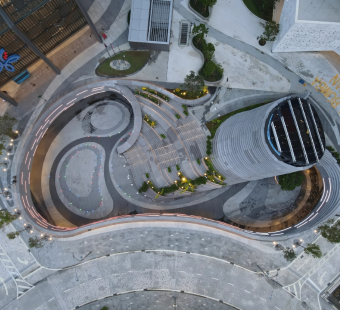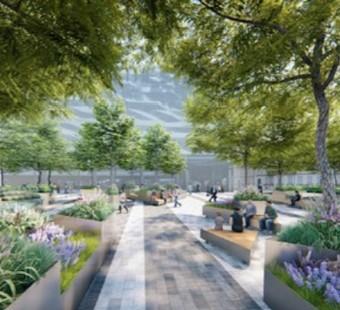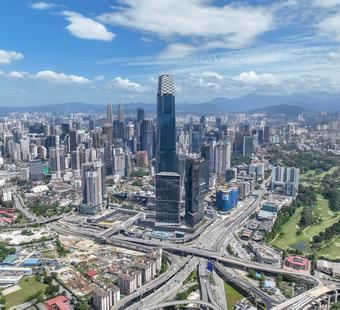The Tun Razak Exchange (TRX), Malaysia’s first master planned international financial district in the capital Kuala Lumpur, is coming together in a time of much global uncertainty. The current economic challenges wrought by the COVID-19 pandemic underline the importance of planning for an unpredictable future.
The key to future-proofing the upcoming CBD is a robust digital backbone, able to accommodate the needs of the workplace of the future.
“It’s important that the telecommunications infrastructure here is resilient and future-proof,” says Yu Teik Beng, Senior VP for Digital Services at TRX City Sdn. Bhd.
“Everything will be fully fiberized and also scalable to remain agile in supporting upcoming data demand within the district,” he explains.
Dato’ Azmar Talib, CEO of TRX City Sdn. Bhd. lays out how the TRX vision stretches beyond what most developments are today: “Our digital services play a crucial role in delivering a seamless connection and flow of information, both of which are fundamental towards making TRX the most digitally connected district of KL.”
“TRX will provide multi-functional platforms and digital services that enhance customer experience, where they can even work while enjoying our park.”
TRX’s district-wide digital services blueprint is currently being executed to cover all aspects of life here, ensuring an environment that is safe, connected, sustainable and fun.
Smart district
The smart city concept comes into play in TRX when the comprehensive digital infrastructure is integrated with physical elements within the district. To fully realise its unique “smart district” vision, the TRX Integrated Management System (TIMS) is being developed specially to bring together traffic and security management, tunnel control, building and public realm management, as well as integration with facility and asset management systems across the entire development.
The centralised platform provides a complete overview of TRX’s operational status at a glance. This can reduce the time needed to access information, which enables faster and more coordinated responses, particularly important during critical incidents or emergencies. Alarms, analytics and automated workflows enable cross-systems automation which further enhances response time and efficiency.
Near real-time data collected through Internet of Things (IoT) solutions will flow through the TIMS platform to be used for service optimisation and continuous improvement initiatives. Everything from recycling water and traffic management to planning events and placement of wastebins in public areas will be possible with the help of individual sensors throughout TRX. Smart electricity meters will be used to collect information on power usage, first of its kind in Southeast Asia KAPTA probes will evaluate water safety, while automatic incident detection (AID) cameras more effective than the human eye can identify irregularities in tunnel traffic at the same time collect and store traffic data. Sensors on public fixtures will also be able to collect information on pedestrians and utilization of the space all day long, while the weather sensors detect weather conditions to optimize irrigation water usage to name just a few of the data gathering instruments being put in place.
Data analytics to meet human needs
The information is then sent to a centralised system to be analysed for constant monitoring and maintenance; to anticipate and fix any issues as quickly as possible. For instance, lifts and escalators or air-conditioning can be synchronised with busy periods during the day, pipe leaks in the water delivery system can be identified with information of the location and repaired immediately, traffic trends and patterns can be used to improve traffic experience during events, and wastebins that are about to overflow can be emptied before they become a health hazard.
The marriage of physical elements, digital support and the human touch is best captured by the heightened security standards at TRX. Safety features include vehicle security barriers that meet British Standards Institution (BSI) PAS 68 specifications carefully designed for pedestrian safety, and critical assets protection. While CCTV with automatic incident detection alongside advanced thermal cameras at critical locations in the tunnels, further enhances the safety of TRX.
Furthermore, security officers on the ground will be complemented by live video feeds and a comprehensive surveillance system with analytics, all controlled by a centralised district command and control centre where the TIMS system converges.
“By having a centralized platform that can integrate all current and future services, it provides us a base that is flexible to support new capabilities that enable TRX to continuously operate in the most efficient manner, focus on improving the quality of life and experience of our residents and visitors,” says Yu.
“Ultimately, everything we do here is guided by the human experience – what do people need? What will make their time in TRX as comfortable, pleasant and productive as possible?”
“At the end of the day, that’s our goal,” he concludes.
---





